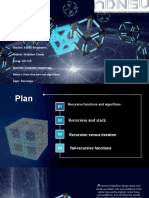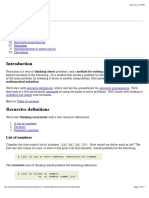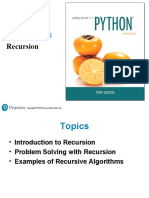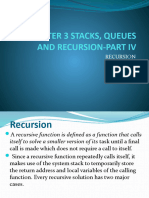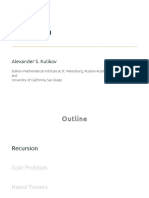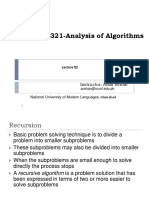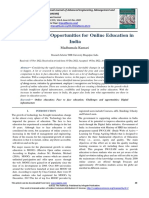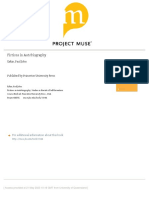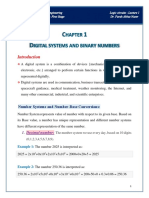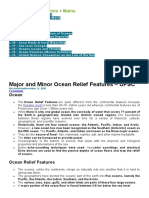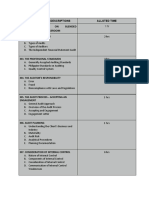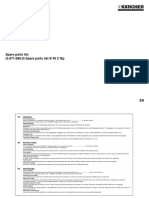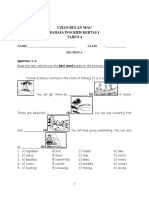CMPT120 J.
Ye
Recursion
• Recursive Definition
• Recursive Programming
• Examples and Exercises
�Recursive Definition
• Recursion is a fundamental programming technique that can
provide an elegant solution for certain kinds of problems
• Before applying recursion to programming, let’s examine
recursive definition
• A recursive definition is a definition in which the concept
being defined is used in the definition itself
2
�Recursive Definition (cont)
• Consider a list of numbers, e.g.
24, 88, 40, 37
• Such a list can be defined as follows:
A LIST is a number
or a number comma LIST
• That is, a LIST is defined to be a single number, or a number
followed by a comma followed by a LIST
• The concept of a LIST is used to define itself – recursive definition
3
�Recursive Definition (cont)
• The recursive part of the LIST definition is used several
times, terminating with the non-recursive part:
number comma LIST
24 , 88, 40, 37
number comma LIST
88 , 40, 37
number comma LIST
40 , 37
number
37
4
� Recursive Definition
Infinite Recursion
• All recursive definitions have to have a non-recursive part
• If they didn't, there would be no way to terminate the
recursive path
• Such a definition would cause infinite recursion
• This problem is similar to an infinite loop, but the non-
terminating "loop" is part of the definition itself
• The non-recursive part is often called the base case
5
�Recursive Definition (cont)
• N! , for any positive integer N, is defined to be the
product of all integers between 1 and N inclusive
• The above definition can be expressed recursively as:
1! = 1
N! = N * (N-1)!
• A factorial is defined in terms of another factorial
• Eventually, the base case of 1! is reached
• This definition also gives a (recursive) way of calculating it
6
�Recursive Definition (cont)
5!
120
5 * 4! 24
4 * 3! 6
3 * 2! 2
2 * 1!
1
7
�Recursive Programming
• A recursive solution has to be in a function!
• A recursive function – a function that invokes itself (with a
“smaller” argument)
• The code of a recursive function must be structured to
handle both the base case and the recursive case
• Each call to the function sets up a new execution
environment (stack), with new parameters and local
variables
• As with any function call, when the function completes,
control returns to the function that invoked it (which may be
an earlier invocation of itself)
• Examples and Exercises … 8
�Recursive Programming (cont)
• How to implement the recursive factorial function?
def factorial(n):
if n == 1:
result = 1
else:
result = n * factorial(n-1)
return result
• How to implement the factorial function iteratively (using
loop)?
9
�Recursive Programming (cont)
result = 6
main
factorial(3)
result = 2
factorial
factorial(2)
result = 1
factorial
factorial(1)
factorial
10
�Thinking Recursively
When designing recursive solution:
• Ignore details
– forget how stack works
– forget the suspended computations
– yes, this is an "abstraction" principle!
– and encapsulation principle!
• Programmer just think “big picture”
– Let computer do "bookkeeping"
11
�Thinking Recursively: power
• Consider function power(x,n) (n is integer, n >= 0)
n
• To calculate xn :
x * x * x * … * x * x
A smaller subtask is xn-1
n-1
• suppose xn-1 is computed, how to compute xn?
– In other words, how to go from the smaller subtask to the original
one?
– Easy! xn-1 * x
• And ensure base case will be met
• Now how to define the recursive power function? 12
�Recursive Design Techniques
• Don’t trace entire recursive sequence!
• Just check 3 properties:
1. no infinite recursion
• at least one base case
• the size of the argument is smaller in the recursive
call
2. stopping/base case(s) return correct value(s)
3. recursive case(s) return correct value(s)
13
�Recursion Versus Iteration
• Recursion not always "necessary“
• Any task accomplished with recursion can also be
done without it
– non-recursive, also called iterative -- using loops
• Recursive:
– Runs slower, uses more storage
– Elegant solution; less coding
• Now we will do some recursive function analysis, as well as
recursive coding.
14












